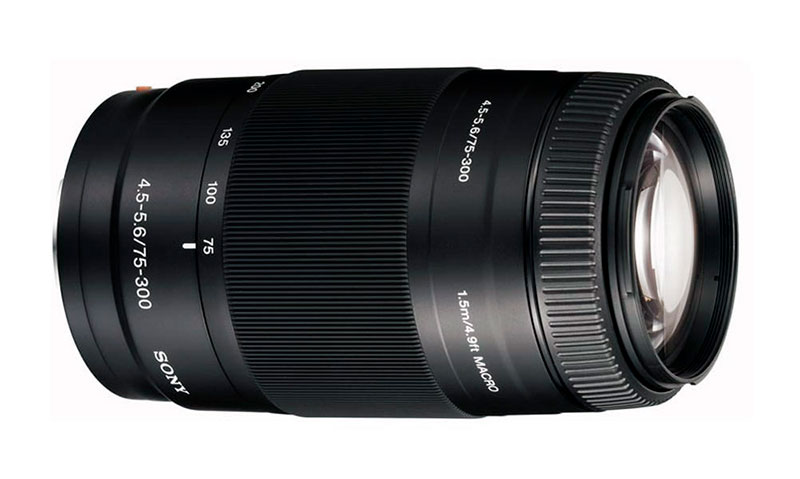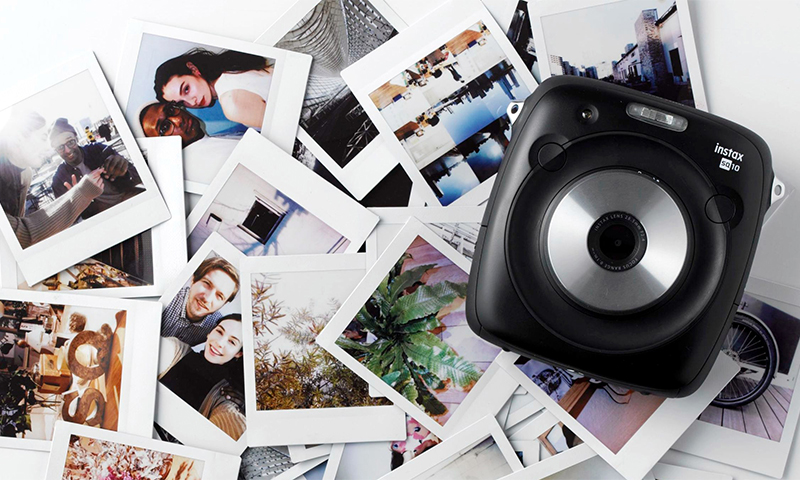Sony cameras attract amateurs and professionals with impeccable picture quality and excellent ergonomics. The company is one of the three largest manufacturers of photographic equipment, satisfying the needs of discerning buyers. But the best camera will produce great shots only if an optimal lens is chosen. We present the ranking of the best lenses for Sony, for any occasion and wallet.

Content:
What company Sony camera lens to choose
1. Sony
Sony was founded in 1946 as an audio equipment manufacturer. Its history of the manufacturer of photographic goods began in 2005 after the takeover of another Japanese firm Konica Minolta. The conglomerate assembled under a single roof continued to produce equipment of impeccable quality according to uniform standards.
The advantage of modern Sony cameras is the possibility of using lenses from Minolta, of which several million pieces were produced.
Now all three manufacturers produce equipment under the brand Sony, which is sold in hundreds of countries around the world and ranks third in popularity.
2. Tamron
In 1950, Tamron Co., Ltd., a photo equipment manufacturing company, appeared in the Japanese city of Urava. The product list occupies a special place lenses for cameras, lenses and industrial optical equipment. A large range of accessories is available for beginners and experienced photographers. Today, Tamron’s largest shareholder is Sony, which owns an 11% stake.
However, admirers of other brands can use the products of Tamron, the company produces equipment with Canon and Nikon bayonet, which allows focusing on the quality of lenses, autofocus mechanisms and optical stabilization.
3. Carl zeiss
Back in 1846, Carl Zeiss opened a workshop for the production of optical lenses. Today it is a huge corporation that produces optics of various purposes, its glasses can be found in telescopes and mobile phones, medical laboratories and research workshops. Until now, Carl Zeiss deals exclusively with optics, creating new technologies for the production of lenses.
Therefore, lenses with the Zeiss logo are considered to be the pinnacle of technology. Their high price is compensated for perfect quality and long service life.
Best fixed focal length lenses
The advantages of glasses with a fixed focal length quite a lot, they primarily include: compactness, low weight, improved image quality and reliability. Therefore, amateurs and professionals necessarily consider fixes as lenses, without which it is impossible to do.
Sony 50mm f / 1.8

Sony 50mm f / 1.8 is the lightest lens. Weight only 170 gr. is a record for this type of technology. Since the company has made glass under the crop camera, its use will be especially convenient for photography beginners and advanced amateurs.
Advantages:
- diaphragm 1.8 will provide an opportunity to shoot in conditions of lack of light and separate the object from the background with the help of the DOF;
- Minolta A bayonet, universal size for Sony digital cameras;
- fast and tenacious autofocus;
- image sharpness across the focus field;
- branded hood in the kit;
- low price compared to peers.
Disadvantages:
- the plastic case, although reliable, is inferior in strength to the metal;
- the inability to use full-frame cameras.
In general, customers note the excellent image quality of the lens, ease of operation and compactness.
Sony 50mm f / 1.4

For those who are seriously engaged in photography, a 50 / 1.4 lens will be indispensable.Awesome aperture allows you to work with minimal illumination and create three-dimensional images with natural light. At the same time a small weight of 220 grams. and small dimensions will allow him to travel and long hikes.
This model for professionals and advanced amateurs has a “normal” focal length, which makes it possible to shoot both portraits and landscapes. Fast autofocus is indispensable when shooting sports stories, animals and children.
Advantages:
- the ability to apply on full-frame and crop cameras;
- minimum focusing distance 45cm;
- lens lumen;
- no distortion and chromatic aberrations.
Disadvantages:
- noisy autofocus;
- plastic case.
Often lovers complain about the lack of sharpness of high-aperture lenses on an open aperture. The reason lies in the fact that f 1.4 implies being in the sharpness of objects in the range of a few millimeters, the slightest shift leads to a marriage.
Carl Zeiss Sonnar T * 55mm f / 1.8

The legendary optical scheme Sonnar from the company Carl Zeiss is realized in a lens with a focal length of 55 mm. Despite the relatively high price, many admirers of high-quality photos choose the technique of Carl Zeiss. Sometimes it is difficult to explain in words its advantages, for this, art historians use the epithet “aerial picture”.
Advantages:
- flawless, razor sharpness;
- autofocus, which works perfectly in difficult conditions;
- chromatic aberrations are minimized even on an open diaphragm;
- no geometric distortion;
- robust metal construction;
- the ability to work on crooked and full-size cameras;
- little weight.
Disadvantages:
- lack of moisture protection;
- high price.
Tamron SP AF 90 mm F2,8 Di

This is the best lens for macro photography. Universal glass, which can capture an excellent portrait with a blurred background, capture a macro in the 1: 1 ratio, or catch a face in a crowd. Although its autofocus is hardly the fastest, but when working at a sporting event, the photographer captures a distant plot due to the delay in focusing.
The main requirement for macro lenses is image sharpness. And Tamron copes with the task, the reviews say about the fine detail on the apertures from 5.6 to 11.
Advantages:
- wide range from f 2.8 to f 32;
- minimum focusing distance 29 cm;
- the possibility of manual focusing;
- affordable price;
- small for this focal length, the weight of the device in 405 g.
Disadvantage:
- "Screwdriver" autofocus, which is the cause of slow work and increased noise.
Best zoom lenses for Sony cameras
Glasses with varying focal length are bought more often than others due to their versatility. One lens with a focal length of 18-105 mm can replace several fixes at once. Although you have to pay a higher cost for this, but very often the choice is made specifically towards zoom lenses.
Sony 18-105mm f / 4 G

It is the most versatile lens for non-full-frame cameras. It covers almost all focal lengths that are needed for shooting. Landscape and architectural photography will be successful at the “short end” of 18-30 mm, a dynamic plot can be caught in the middle range. If there is a need to capture a bird on a tree, then this is easy to do at a focal length of 105 mm. It also helps to capture the portrait, f4 easily blur the background.
Positively about the zoom of 18-105 mm videographers respond, who shoot video on the camera. It has not only a manual, but also an electronic zoom system that allows you to smoothly zoom in or out an object by selecting one of three speeds.
Advantages:
- good autofocus operation;
- the presence of aspherical and low-dispersed lenses;
- the seven blades of the diaphragm, which creates a beautiful bokeh;
- internal focusing, the front lens does not leave during autofocus operation.
Disadvantage:
- geometric distortion along the edge of the frame (distortion), will have to be edited in a graphic editor.
Affordable price and a juicy picture of Sony 18-105mm f / 4 G are noted in most reviews, so the purchase will delight the novice. An excellent superzoom is useful when traveling; it will be indispensable for capturing memorable moments and other plots by amateur of photo art.
Carl Zeiss Vario-Sonnar T * 24-70mm f / 2.8 ZA SSM

The German company offers another professional lens, which has only one drawback - the high price. Therefore, it is difficult to recommend it to an amateur. But the photographer, in whose hands will be Vario-Sonnar 24-70, will get real pleasure. The quality of photos is at the highest level, with a stable work, even in difficult lighting conditions.
Advantages:
- ultrasonic motor provides accurate and instant focusing;
- good sharpness and natural color reproduction;
- all metal case;
- dust and moisture protection;
- low aberration and distortion.
Disadvantages:
- great weight (995 g);
- high price.
The uncompromising lens is made of metal, all lenses are made of glass, which gives a delightful picture and reliability.
Reviews speak about this lens as a dream of a photographer, amateur and professional. His technical perfection does not cause any complaints in any shooting scenes. Report, landscape, portrait - everything is subject to him.
Sony 75-300mm f / 4.5-5.6

Photohunting is impossible without a lens that can bring the object closer. For this, an indispensable assistant will be the Sony 75-300, an inexpensive telephoto with the ability to change the focal length. He will make any birdie or person six times closer, and at the “short end” he will allow to capture the growth portrait of a person in a large room.
Advantages:
- affordable price;
- minimum optical distortion;
- fairly fast autofocus;
- bright and juicy picture;
- easy operation.
Disadvantages:
- large dimensions;
- rotating front lens will not allow the use of a polarizing filter;
- low luminosity.
Reviews suggest that the Sony 75-300 will be an excellent option for beginners who will get the opportunity to remove deleted items for a little money.
What lens for a Sony camera to buy
1. For those who want to get good reportage footage, the original Sony 50mm f / 1.8 fits. He will also help to make good portraits and landscapes.
2. Professionals and advanced fans will appreciate the Sony 50mm f / 1.4, with a nice picture and color reproduction.
3. Carl Zeiss Sonnar T * 55mm f / 1.8 refers to cult devices that can satisfy the most demanding photographers. The high price is easily compensated by the artistic result.
4. Macro and portrait submission to the photographer, who has a Tamron SP AF 90 F2,8 Di.
5. One of the most versatile Sony 18-105mm f / 4 G will be indispensable when traveling.
6. Carl Zeiss Vario-Sonnar with a focal length of 24-70 mm is an icon of reportage photographer. Fast, fast zoom, any banal plot will turn into a highly artistic photo.
7. The low-cost Sony 75-300mm f / 4.5-5.6 will be a great beginner telephoto, who has decided to devote his time to photographing distant objects.
It will be interesting to friends too










